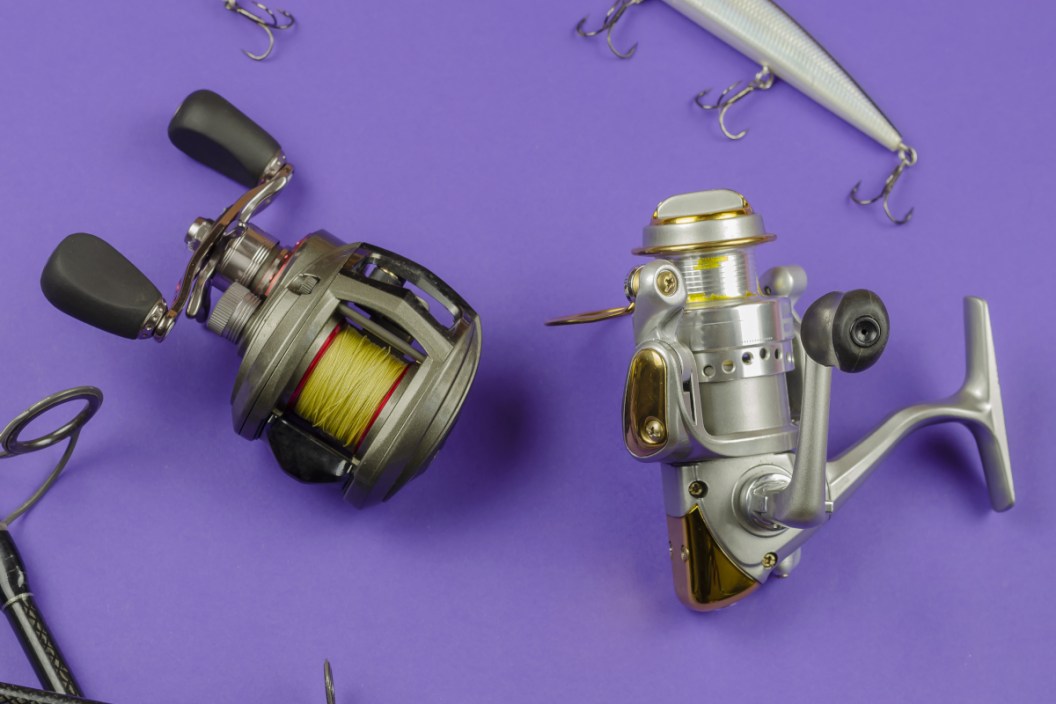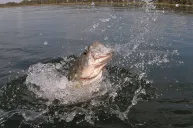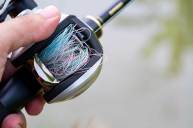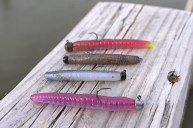Baitcaster vs spinning reel: which one wins?
It is the debate that is as old as fishing itself. Baitcasting reels vs spinning reels. This has caused many a heated debate in many a fishing camp as anglers step up to the plate to defend their favorite type of reel.
But this article isn't really about which one is better. Because that debate really comes down to personal preference, even for experienced anglers.
Instead, we're going to look at the different fishing styles these types of reels are best suited for and what works best for different situations.
Baitcasting scenarios
Many anglers have a love-hate relationship with baitcaster reels. Most people are going to agree that this reel type gives you a little bit better control of where your cast lands because you can thumb the spool more easily, and ideally land your cast where you want it. They also tend to have higher gear ratios, meaning they're ideal for faster retrieves on things like crankbaits and buzzbaits for bass fishing.
But it isn't just largemouths that baitcast reels work well on. Let's say you're fishing giant topwaters in the Amazon for Peacock bass, or in saltwater off the coast of South Africa for giant trevally. Again, it goes back to gear ratios, because both of those species require a pretty aggressive topwater presentation. A higher ratio allows for more casts in a long day of fishing before you get tired.
Traditionally, this is why baitcasting is the choice for anglers wanting to use heavier fishing lines and heavier lures. Anglers who like to fish big jigs in deep water for bass pretty much swear by baitcasters in those scenarios. They're also extremely popular for soft plastics rigs like the classic Texas rig. Baitcasters also offer a greater line capacity.
One place where a baitcast reel can have a downside is tight quarters. These reels require some room to get any sort of casting distance. If you're in tight with some trees or brush, trying to reach a small pocket of fish tucked into cover, it may be more difficult to get your lure where you want it, especially with heavy lures like spinnerbaits. Baitcasters are also the reel of choice for trolling and places where longer casts are needed, such as in ultra-clear waters.
Unfortunately, for all their uses, baitcasters are incredibly sensitive reels and it's one of the things that leads many people to view them as strictly fishing reels for experienced anglers.
It doesn't take much to set off a baitcasting reel and cause the dreaded bird's nest backlash. We know many an angler's first forays with these reels has often led to them spending more time clearing tangles than fishing.
For that reason, we don't recommend buying a baitcaster for the first time right before you go on a major fishing trip, be it saltwater or freshwater. You'll want to get some practice in ahead of time. However, once you master one of these types of fishing reels, you will find them to offer incredible casting accuracy with monofilament or braided lines, making it a valuable piece of fishing tackle for when the fish are holding tight to cover.
Spinning Reel Scenarios
Traditionally spinning reels have been thought of as systems for lighter lines and light lures. But spinning gear is becoming more and more popular for different types of fishing, mainly because it is a little bit easier to use than baitcasting.
At some point, many bass fishing pros began incorporating spinning tackle more into their arsenal as "finesse fishing" techniques have taken off. The explosion in popularity of braided line has also played a part in that. Braided lines allow anglers to use heavier lines in smaller reels. As a result, you see more and more saltwater fishing anglers moving towards spinning fishing techniques these days for the really big fish.
Let's go back to the close-quarters factor that baitcasting struggles with a bit. You don't need a ton of space to make casts with spinning gear. With a heavy baitcasting rod, you will want more space. Especially with large casting rods for catfish or carp.
I like to use spinning gear for a lot of roadside angling adventures where I'm dealing with low-hanging power lines, simply because it's easier to make a side arm cast and keep my lure from ending up in the collection that's already stuck up there!
The downside to the downward-hanging nature of the reel is that I've found it more difficult to use when sitting in my kayak. You hold the rod and reel at an awkward position that will tire your arms in a hurry. It also makes hook sets more difficult at times.
Spinning reels also offer a bit more versatility depending on if you are right handed or left handed. Most baitcasting reels are fixed one way or another with the majority skewing towards right hand setups, much to the chagrin of Southpaws everywhere. Spinning reels can usually be customized to fit your personal preference.
One area where spinning tackle has really taken off is vertical jigging in saltwater. It's just so much easier to open the bail and let your jig or live bait trickle to the bottom with a spinning reel than a baitcaster. These rods and reels also offer some great leverage on hook sets with this type of fishing. Vertical jigging or drop shotting with with spinning gear are both great things to try for suspended largemouths and smallmouth bass in colder weather.
Personally, I really enjoy panfishing with spinning gear, especially with ultra light line setups that allow for more of a battle with a smaller fish like crappie. It's especially great when ice fishing with a spinning setup. Although, more and more anglers are starting to use heaving spinning rod setups through the ice for bigger fish like lake trout, walleye, and northern pike simply because it makes it easier to play the fish.
Another benefit to spinning reels is you can use fluorocarbon lines with them. These lines are excellent for clear water applications on fish that might otherwise be easily spooked while still offering minimal line twist.
It always depends on the situation
When it comes to using baitcasting or spinning gear, a lot of emphasis is put on personal preference, which is understandable. I prefer the ease of use and feel of spinning gear myself, but most versatile anglers will have fishing rods rigged with both in their boat and will know how to use them.
Each one's use is dictated by the situation and type of fishing you're doing. A good rule of thumb is if you're using heavy lures or bait, think baitcaster. Lighter lures? Go spinning.
Ripping crankbaits through a stumpfield? Go with a baitcaster. Throwing a wacky-rigged worm onto a bass bed? You might want to go with a spinning rig.
The key is to figure out which casting reel works best for each situation and then to use them accordingly. The better you get at doing this, the more fish you will catch in the long run!
Products featured on Wide Open Spaces are independently selected by our editors. However, when you buy something through our links, we may earn a commission.
For more outdoor content from Travis Smola, be sure to follow him on Twitter and check out his Geocaching and Outdoors with Travis YouTube channels.
NEXT: 9 BUDGET FISHING BOATS AND ALTERNATIVES THAT WILL HELP YOU SAVE
WATCH: 2 MINUTES OF RAPID FIRE QUESTIONS WITH MIKE IACONELLI





